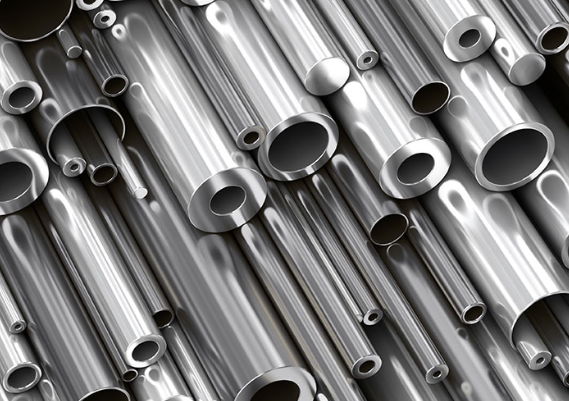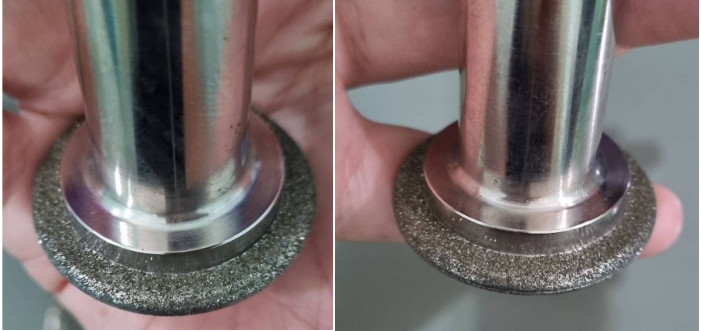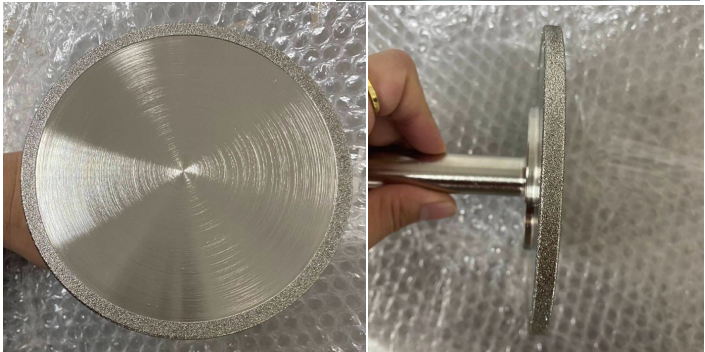Case of electroplated CBN grinding wheel for high-tempreture alloy
What is High temperature alloys?
High-temperature alloys (also called superalloys) are special types of metal materials designed to maintain strength, hardness, toughness, and resistance to corrosion and oxidation at very high temperatures, often above 500°C (932°F) and sometimes exceeding 1000°C (1832°F).
These alloys are typically based on metals like:
* Nickel (nickel-based superalloys – most common)
* Cobalt (cobalt-based superalloys)
* Iron (iron-based superalloys)
Key Properties of High-Temperature Alloys:
* Excellent mechanical strength at elevated temperatures
* Resistance to thermal creep deformation (slow deformation under high heat and stress)
* Good surface stability and oxidation resistance
* Corrosion resistance in harsh environments
Common Applications:
* Aerospace (jet engines, turbine blades)
* Power generation (gas turbines)
* Automotive (turbochargers, exhaust systems)
* Chemical processing plants (heat exchangers, reactors)
* Marine engineering
Examples of High-Temperature Alloys:
* Inconel (Nickel-Chromium alloy)
* Hastelloy (Nickel-Molybdenum alloy)
* Waspaloy (Nickel-based)
* Haynes alloys
* Rene alloys
How to grind High-Temperature Alloys?
High-Temperature Alloys (like Inconel, Hastelloy, Waspaloy, etc.) are hard to grind because of several inherent material properties that make them extremely tough, heat-resistant, and prone to work hardening. Here’s a breakdown of the main reasons:
High Strength at High Temperatures
These alloys are designed to retain their mechanical strength even under extreme heat (up to 1000°C or more).
During grinding, high forces are needed to remove material, which causes more heat generation and can easily overload the grinding wheel.
Work Hardening
High-temp alloys harden rapidly at the surface when deformed by the grinding action.
As you grind, the material being cut becomes even harder, making it increasingly difficult to remove material efficiently.
Poor Thermal Conductivity
* High-temperature alloys don’t conduct heat away very well.
* Most of the heat generated during grinding stays localized in the grinding zone, leading to:
* Wheel glazing (loss of cutting ability)
* Thermal damage (burns, cracks) on the workpiece
* Increased tool wear
Toughness and Ductility
* Unlike brittle materials, high-temp alloys are tough and ductile.
* They tend to smear and deform plastically under the abrasive action, rather than fracture cleanly.
* This causes grinding wheel loading (clogging of the abrasive surface), reducing cutting efficiency and increasing heat.
Abrasive Wear and Wheel Life
* Conventional grinding wheels (like aluminum oxide) wear out fast when grinding these alloys.
* Special wheels (CBN, vitrified bonds) are needed to resist wear and maintain sharp cutting action.
Grinding high-temperature alloys (like Inconel, Hastelloy, Waspaloy, etc.) is challenging because they are very tough, heat-resistant, and tend to work-harden quickly. You need the right grinding wheel, method, and parameters to successfully grind high-temp alloys.
Choose the Right Grinding Wheel
CBN Grinding Wheel (Cubic Boron Nitride)
➔ Best for nickel-based and iron-based superalloys.
➔ Good thermal conductivity and wear resistance.
Diamond Grinding Wheel
➔ Not recommended for ferrous high-temp alloys (nickel/cobalt/iron) because diamond reacts with iron at high temperatures.
➔ excellent for titanium alloys or ceramic coatings.
Conventional Abrasives (Aluminum Oxide or Ceramic Alumina)
➔ Possible for light grinding but much lower efficiency than CBN wheels.
✅ Recommended: Vitrified CBN grinding wheels for stable, cool grinding.
Set Correct Parameters
* Low to Moderate Wheel Speed: Prevent overheating. (Typically 25–40 m/s)
* Controlled Infeed Rate: Small depth per pass to avoid burning and minimize stress.
* High-Pressure Coolant: Essential to remove heat, flush chips, and protect the surface.
* Dressing the Wheel: Keep the wheel sharp using suitable dressing tools.
Use Effective Techniques
Plunge Grinding: For short, precise grinding (e.g., turbine blades, small components).
Creep Feed Grinding: Deep, slow cuts — effective for difficult materials.
Traverse Grinding: Useful for grinding larger surfaces uniformly.
Key Tips for Success
* Keep it Cool: Always flood with coolant — overheating causes cracks or burns.
* Sharp Wheel: A dull wheel increases heat — re-dress regularly.
* Monitor Workpiece: Check for surface integrity issues like micro-cracks, burns, and stress fractures.
* Minimize Wheel Load: Reduce chances of wheel glazing and avoid high forces.
Advantages of Electroplated CBN Grinding Wheel for High-Temperature Alloys
*Superior Grinding Efficiency
Electroplated CBN wheels have sharp, exposed cutting edges
They provide aggressive cutting action — ideal for tough, work-hardening alloys like Inconel, Hastelloy, Waspaloy.
Faster material removal rates (MRR) reduce grinding time.
High Thermal Stability
CBN abrasives withstand very high grinding temperatures without losing hardness.
Reduces risks of thermal burns, micro-cracks, or surface damage on sensitive high-temperature alloys.
Excellent Wheel Life
Electroplated bonds hold CBN grains very firmly in place.
Less grain pull-out and longer service life compared to conventional resin or vitrified bond wheels.
Particularly valuable when machining expensive alloys where consistency is critical.
Single-Layer Precision
Electroplated wheels have a single layer of abrasive.
This ensures constant wheel geometry and predictable grinding performance — very important for tight tolerances required in aerospace and energy sectors.
Reduced Grinding Forces
Sharp CBN grains require less force to cut high-temp alloys.
This results in less part distortion, better dimensional accuracy, and improved surface finish.
Minimal Wheel Dressing
Unlike vitrified or resin-bond wheels, electroplated wheels don’t require frequent dressing.
Saves setup time and increases machine uptime.
Better Heat Dissipation
Electroplated designs can allow better coolant access to the grinding zone.
Improved cooling means less workpiece overheating and better surface integrity.
Customization Options
Electroplated CBN wheels can be easily manufactured in custom profiles and shapes.
Ideal for complex parts or internal grinding of aerospace components made from high-temp alloys.
Recently Moresuperhard received the inquiry from one customer about grinding high-tempreture alloy, lets see the solutions together:
| Grinding wheel | Electroplated CBN grinding wheel |
| Specification | D40x7.5xR2.0xR2.0 |
| Processed material | Inconel |
| Grit | 80/100 |
| Roughness requirement | Ra 6.3 |
—-EDITOR: Doris Hu, Erin Zhang
—POST: Doris Hu



